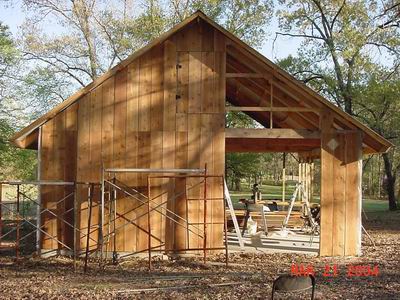by Professor Gene Wengert
Q.
Why is raised grain more of a problem on the pith side of a tree rather than on the bark side?
A.
Raised grain is a problem on the side of the lumber closest to the pith. This is because when the knife comes around (on a planer for example) it has a choice of cutting the wood fibers or pushing them out of the way. On the pith side, as the knife begins to cut into the dense latewood in the annual growth ring, it tries to push this "harder to cut" wood out of the way rather than cut it off which takes a lot of effort. Immediately under this latewood is the weaker, softer earlywood from the next year's growth. The transition from the latewood in one year to the earlywood in the next is abrupt. This weak wood then is prone to squishing down, meaning that the dense latewood can be pushed (at least partially) out of the way rather than be cut cleanly off. When moisture is added, sometime later, these squished cells pop back up and then raised grain results. (I hope you understand this, as I usually use pictures that make more sense.) When planing the opposite side of the lumber, the transition from latewood to earlywood is more gentle and so pushing the dense latewood into the medium-dense wood between the earlywood and latewood is more difficult, so grain raising is not as likely.
Professor Gene Wengert is Extension Specialist in Wood Processing at the Department of Forestry, University of Wisconsin-Madison.
Click on Wood Doctor Archives to peruse past answers.
If you would like to obtain a copy of "The Wood Doctor's Rx", visit the Wood Education and Resource Center Web site for more information.
